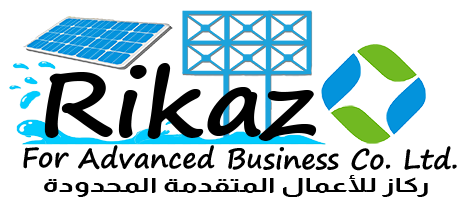

Who are we?
Rikaz Group of Companies is a leading supplier of GRP (Glass Fiber Reinforced Panel) Water Tanks and advanced water treatment solutions. We serve industries and communities with high-quality, durable, and sustainable products for reliable water management.
Where are we located?
Our headquarters are in Khartoum, Sudan, with offices in Tanzania, Kenya, Uganda, UAE, and Canada. This global presence allows us to serve clients across Africa, the Middle East, and North America.
Which industries do we serve?
What are GRP Water Tanks?
GRP (Glass Fiber Reinforced Panel) Water Tanks are strong, lightweight, and corrosion-resistant storage solutions for water. They are ideal for residential, commercial, and industrial use.
Why choose GRP tanks over traditional tanks?
What sizes are available?
We offer tanks from small domestic sizes to large industrial reservoirs, with custom options to fit your needs.
How can I order a GRP Water Tank?
What water treatment services do you provide?
Are your systems eco-friendly?
Yes! Our solutions use green technologies to reduce energy use and environmental impact.
Can you provide custom solutions for my industry?
Absolutely. We design systems for factories, farms, municipal supplies, hotels, and more.
How can I contact you?
Do you offer installation and maintenance?
Yes, we provide professional installation and regular maintenance to ensure your system’s performance and longevity.
Where can I find client testimonials?
Visit our website for testimonials and success stories, or contact us for references.
Why are GRP tanks ideal for places like Tanzania and Zanzibar?
GRP tanks resist corrosion from humidity, salt, and heat—perfect for coastal and arid regions. Their smooth interior keeps water clean and safe.
What capacities are available?
From 5,000 to 100,000 liters or more, with modular options for any community size.
How are tanks transported and installed in remote areas?
GRP tanks are lightweight and modular, making them easy to transport and assemble even in hard-to-reach locations.
Do you provide training for local staff?
Yes, we offer training for local water authorities and maintenance teams.
Can GRP tanks integrate with existing water systems?
Yes, they are compatible with various piping and can be added to current networks.
How often is maintenance needed?
Minimal maintenance—usually just cleaning every six months.
What is the expected lifespan?
Typically 25–30 years, even in harsh coastal or inland environments.
Are spare parts available locally?
Yes, we ensure spare parts and repair services are accessible in your region.
What is the total cost?
While upfront costs may be higher, GRP tanks save money over time due to their durability and low maintenance.
How do they compare to other tanks?
GRP tanks are quicker to install and last longer than concrete or steel alternatives, offering better long-term value.
How many people benefit from these tanks?
A single 50,000-liter tank can serve up to 1,000 households, improving water access during dry seasons.
Do GRP tanks support sustainability goals?
Yes, they are long-lasting, reduce waste, and can be recycled at the end of their lifespan.
Do they help conserve water?
Yes, their leak-proof design minimizes water loss, crucial for arid regions.
What foundation is needed?
A simple concrete slab or compacted soil base is sufficient.
Are GRP tanks compatible with solar pumps?
Yes, they work well with solar-powered water systems.
How do these tanks benefit communities?
They improve water access, reduce the burden on women and children, and create local jobs through installation and maintenance.
Will local labor be used?
Yes, we prioritize hiring and training local workers.
How do GRP tanks perform in coastal or high-salinity areas?
They resist corrosion from salt air and water, making them ideal for coastal environments.
Can they handle extreme temperatures?
Yes, GRP tanks are UV-stabilized and withstand temperatures from -40°C to +80°C.
Can tanks be customized?
Yes, we offer modular designs for any capacity and can integrate with rainwater harvesting systems.
Are smart monitoring options available?
Yes, tanks can be equipped with sensors for real-time water level and quality monitoring.
Are there financing or subsidies available?
We can help you explore partnerships with NGOs, international organizations, and local government programs for funding and subsidies.
Are GRP tanks safe for drinking water?
Yes, they are made from food-grade materials and meet WHO standards for potable water.
Can they withstand natural disasters?
Properly anchored GRP tanks are resilient against earthquakes and floods.
Contact us today to learn more about how our GRP Water Tanks and water solutions can benefit your community or business!
Rikaz Group of Companies – Reliable Water Solutions for a Better Tomorrow